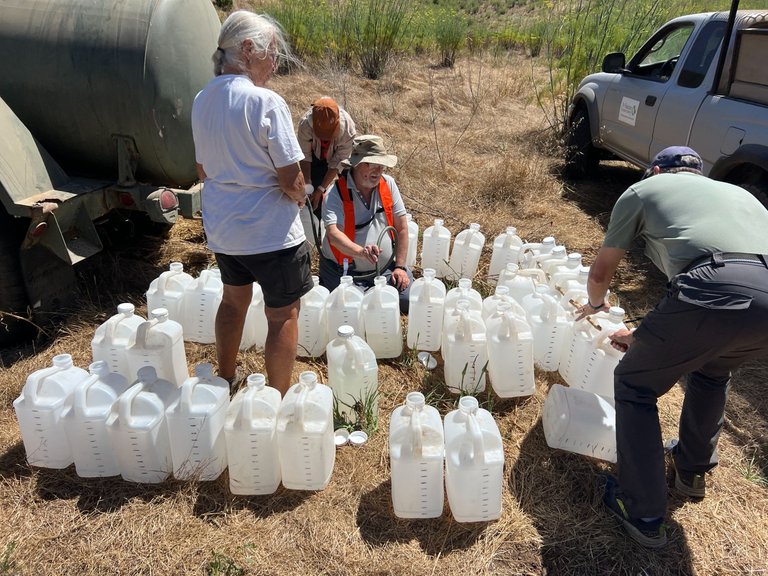
I spent five days on the 65 square mile Santa Cruz Island off the coast of Southern California with seven other volunteers to restore a section of habitat to its native conditions. The entire island had been owned by one family in the past, who used it for ranching and winemaking. Back then, there wasn't any concern about introducing nonnative species to the island, which in this case included eucalyptus trees, known to grow fast. They were a favorite for creating wind breaks and location markers across the vast western United States. Today, 25% of the island remains accessible to the public as part of the Channel Islands National Park, while 75% is kept private and managed by The Nature Conservancy. We were in the latter area area.
Our effort was to nurse along 1500 oak tree seedlings that were planted last February and March. Each seedling has an identification number that is mapped, so growth patterns and results could be analyzed. There are also control group plantings throughout that receive no watering. The planting included the Santa Cruz Island Oak and three other native species in groves along valleys and hillsides.
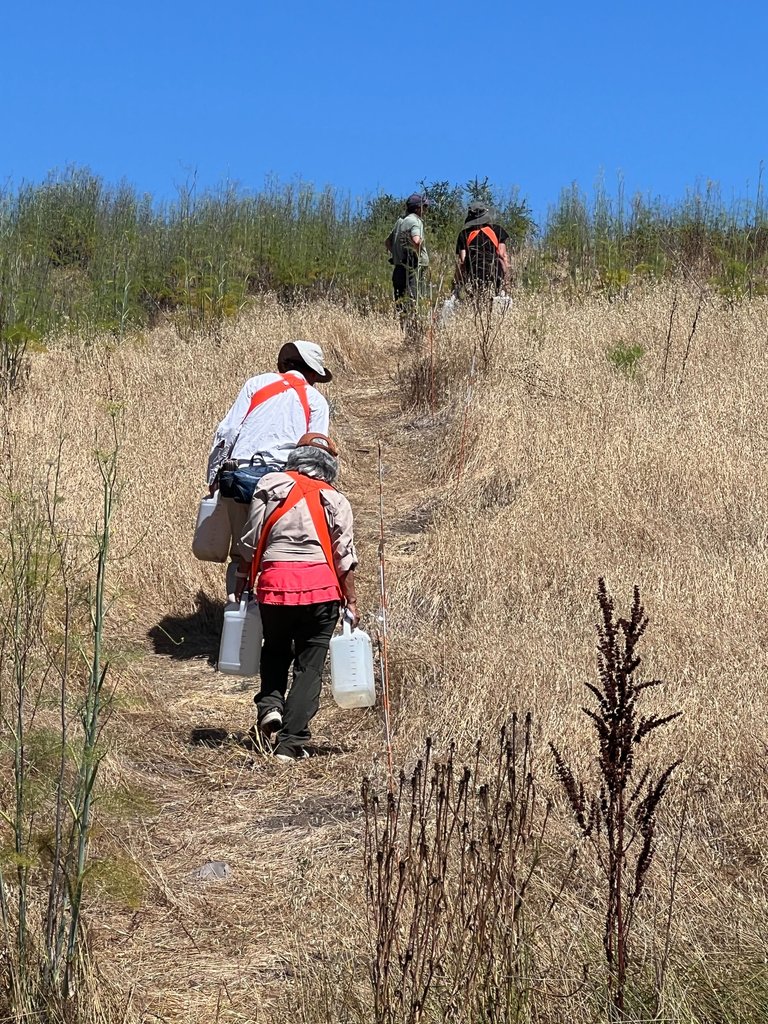
The effort was conducted in three phases. Phase one was hauling pairs of two and one-half liter bottles of water to five each seedling with. About 5% of the seedlings had died and were pulled. Their ID tags were recovered to update the data map.
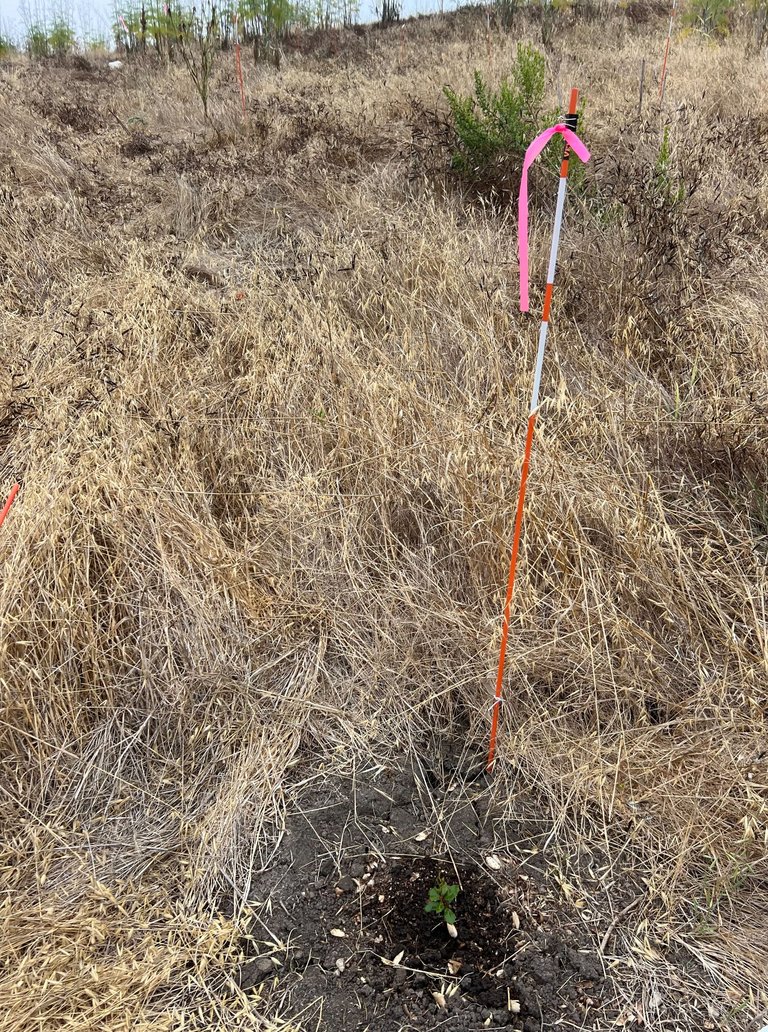
Phase two involved replacing the small irrigation flags used to mark ~20% of the planting with 4 foot orange and white nylon poles to make them easier to find. This took quite some time, as a number of the irrigation flags were hidden under grassy overgrowth or among invasive fennel.
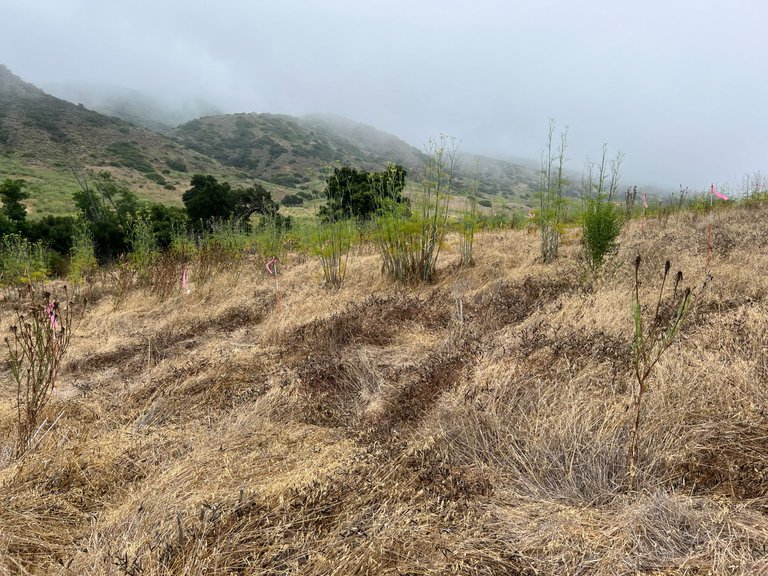
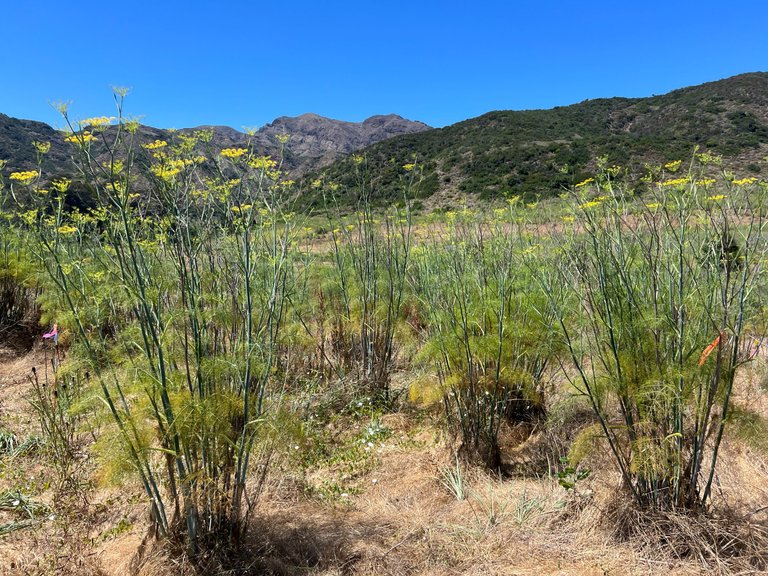
Phase three involved returning to each plant with oak mulch to help retain the water we'd applied. Throughout our efforts, we would come upon Island Fox, the apex predator on the island. They would generally hold their ground while we assessed each other, before wandering off to continue its day.
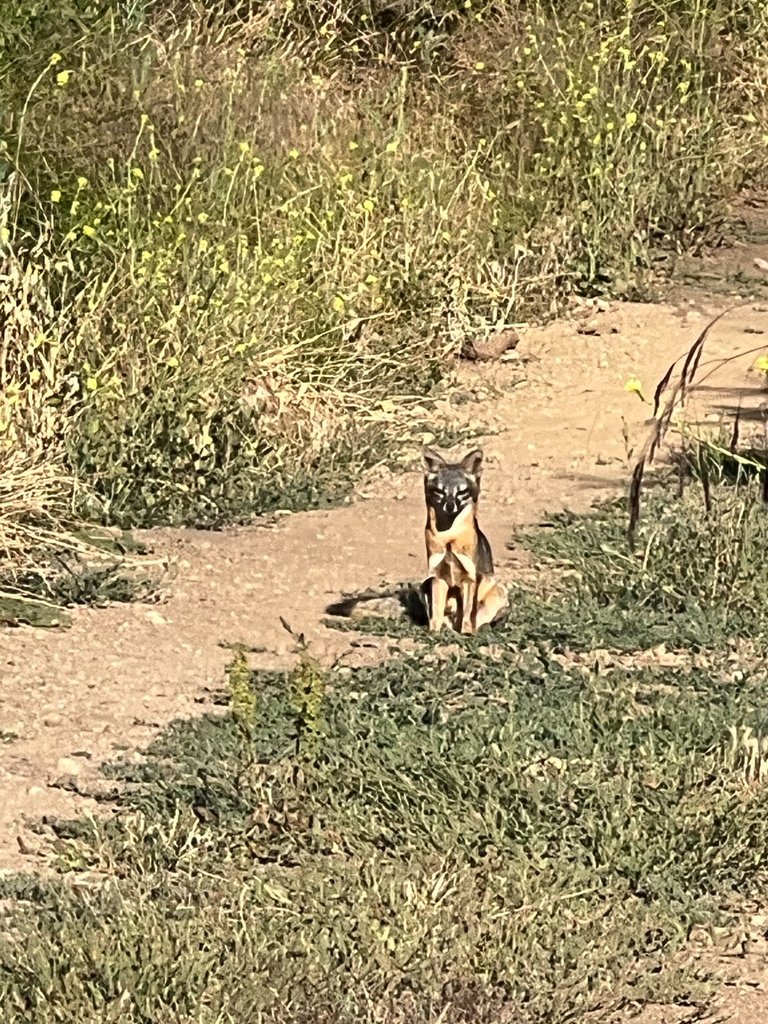
We felt a great deal of accomplishment when our work was complete In particular, replacing all of the irrigation flags ensured that future monthly watering groups would likely find all of the seedlings, thus ensuring that no oak would be left behind!
(All photos are property of the author)
That is one healthy and fine-looking specimen. The hunting must be good.
It may be in the future, but the unique Island Fox is seven years on from coming off of the endangered species list, and will not be hunted for quite some time.
What I meant to say was that as the apex predator on the island the hunting it does on the island must be good. Which is why it looks to be in good health.
Posted via D.Buzz
Is it German Shepherd?
I appreciate your skills for Nature.
#dreemerforlife
It is a Channel Island Fox. They are quite small, and have come off the extinction list. You can find more info at https://en.wikipedia.org/wiki/Island_fox
Interesting, we should take care about Wild Animals especially that are going to be in extinct stage. I like your post man 😀
Thank you.
If you hadn't clarified in the post, I would have thought that that cuty was a German Shepherd 🤔
Great job you are doing on the island, Sir.
#dreemerforlife
I agree, in that there's nothing in the cropped photo to address scale. The "dirt path" the fox is on is the edge of a farm road, with only one tire track is visible.
You are doing an amazing job on the island.
Came in from dreemport.